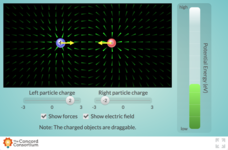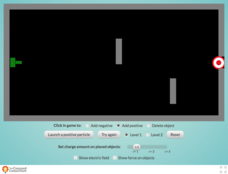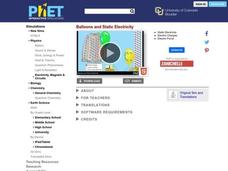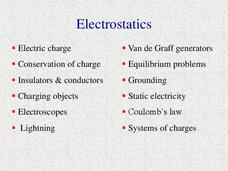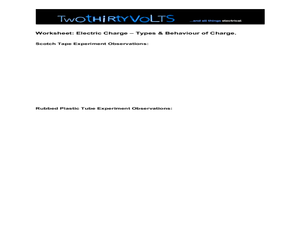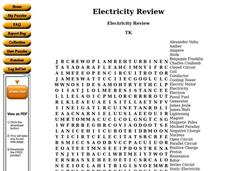Concord Consortium
Electric Potential Energy and Charge Intensity
Does the charge on a particle affect its energy? Scholars first explore how the strength of a charge affect the potential energy. They observe the change in the electric fields as this potential energy changes.
Concord Consortium
Target Game—Distance/Force Relationship
Explore the relationship between the distance and the force of charged particles. Scholars adjust the location of charged particles to change the path of a launched particle. By displaying the electric field, they can make a connection...
Concord Consortium
Target Game—Charge Magnitude/Force Relationship
Build an electric field to direct a charged particle to a target. Scholars determine how location and strength of charge affect the electric field that surrounds the object. They complete two challenges to strengthen their understanding.
Concord Consortium
Target Game—Free Play
Challenge your classes to use electric fields to hit a target. Scholars place positively and negatively charged particles on a game board to direct a charged particle to a target. They can choose to view the electric field and force on...
PhET
Balloons and Static Electricity
Like all electricity, static electricity flows at the speed of light, or 186,282 miles/second. The interactive simulation shows how like charges repel like charges and opposites attract. The user can choose either one or two balloons, a...
Urbana School District
Electrostatics
Why did lightning shock the man? Because it didn't know how to conduct itself. Presentation covers electric charges, insulators, conductors, electroscopes, lightning, generators, grounding, static electricity, and more. Presentation...
Curated OER
Applied Science - Physics Lab
Learners explore electricity. In this Physics instructional activity, students investigate the origin of static electricity. Learners compare static electricity to current electricity.
Curated OER
Electric Charge
Students discover and identify positive and negative electrical charges and understand that like repels and opposite charges attract. In this physics lesson plan, students observe how friction can be used to give electrical charge...
Curated OER
Positive and Negative Charge Using Balloons
Fourth graders observe and explain how balloons rubbed on a shirt create positive and negative charges. In this positive and negative charge lesson plan, 4th graders record their results and explain their findings.
Curated OER
Pith Ball Electroscope Lab
In this pith ball electroscope worksheet, students complete an experiment using a pith ball electroscope to determine charges. Students write down their observations and then complete 5 short answer questions.
Curated OER
What is an Electric Current?
In this electric current worksheet, students will write down three facts about electric currents. Based on these facts, students will come up with a conclusion as to what an electric current is.
Curated OER
Electricity Review
In this science worksheet, students locate thirty-eight vocabulary words and inventors related to electricity in a word search. answers are provided in various formats.
NASA
Nasa: Kids: Design an Ion Engine
Four interactive tutorials begin with a basic animation showing the relationship between positive and negative charges. The final test is to build the most efficient ion engine possible by manipulating a series of variables.
Library of Congress
Loc: Everyday Mysteries: How Does Static Electricity Work?
Learn how static electricity results from an imbalance of electrical charges.
Concord Consortium
The Concord Consortium: Molecular Workbench: Electrostatic Interactions
Adjust the amount of positive or negative electrostatic charge on a balloon to see how it interacts with the charges in a wall.


